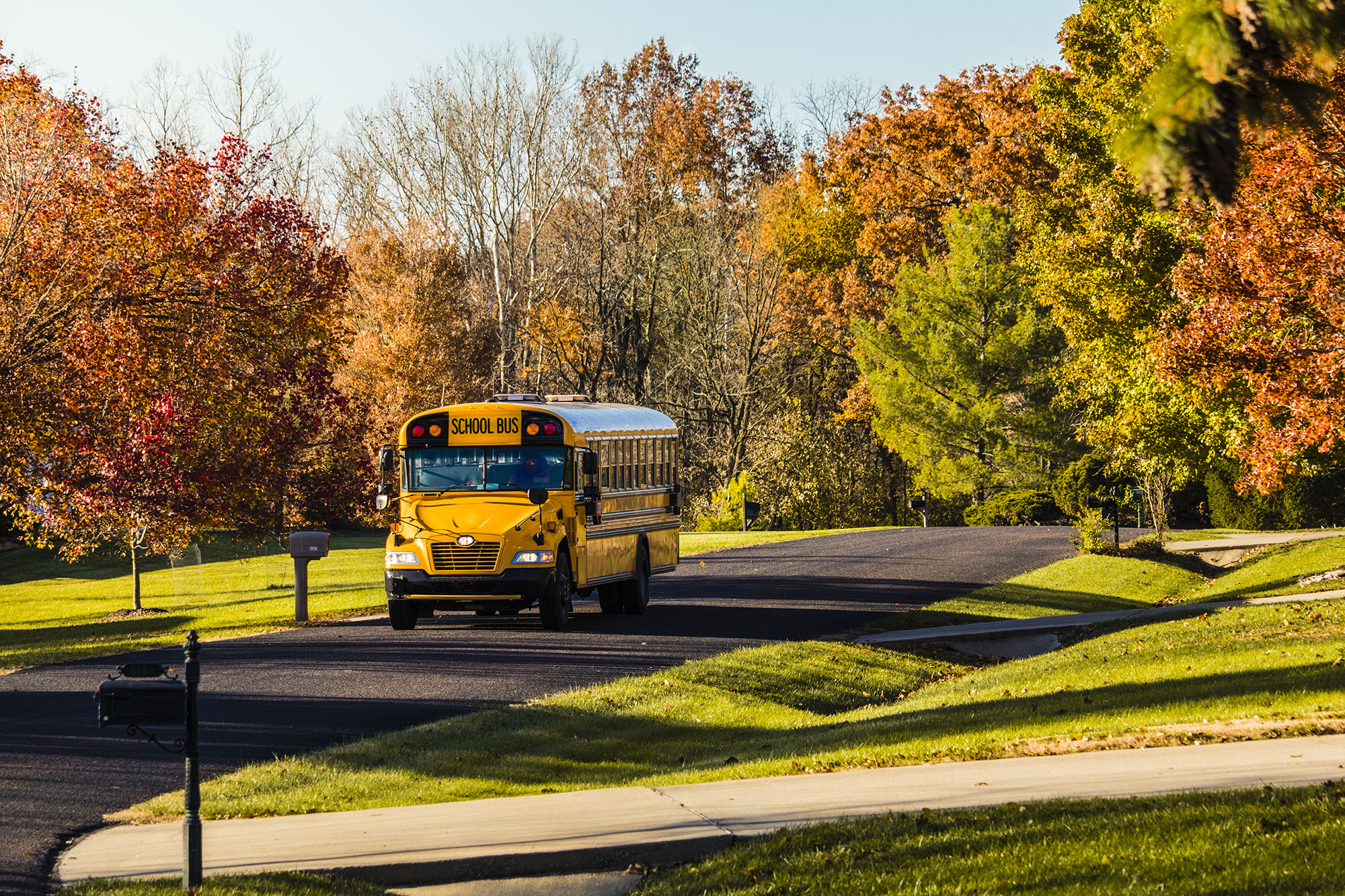Distracted driving is dangerous no matter what time of the year it is, but with the days slowly getting shorter and school back in session, make sure you’re staying vigilant behind the wheel. Distracted driving can be anything from talking on the phone to eating, drinking or fiddling with the controls in your car.
Back-to-school season means being extra aware of children as they come and go from school. According to the National Highway Traffic Safety Administration (NHTSA), children are more at risk approaching or leaving a school bus than they are riding one. So be attentive when driving through neighborhoods and school zones as students will likely be walking or riding their bikes to and from school. Also be mindful when backing out of a driveway or leaving a garage.
With school buses on the road, your commute may lengthen if you get stuck behind one with many stops, however it’s important to always stop for school buses when their lights are flashing. Remember, yellow flashing lights mean slow down not speed up, and if the bus puts out its stop sign, you must stop. Find more information on school bus stopping laws by state here.
One of the biggest causes of distracted driving is cell phones. At any given moment in the day, over 650,000 people on the road in the United States are using phones or electronic devices while driving.
Texting is generally the main culprit but talking on a hands-free device can also impede someone’s awareness of their surroundings by up to 50%. Even if you think you’re good at multitasking, you’re not as good as you think you are. The brain can only process a certain amount of information at a time and doing two things at once, even tasks that you engage in daily, will not be done with 100% accuracy.
The NHTSA reports that sending or reading a text takes your eyes off the road for around five seconds, which is equivalent to covering the length of an entire football field with your eyes closed if driving at 55 mph.
Driving in the dark is another form of distracted driving. The National Safety Council (NSC) states that one’s visibility is limited to 250 ft. in the dark or 500 ft. if high-beam headlights are used. This creates less time to react, so remaining aware of what’s around you will help you be less likely to get into an accident.
Keep distractions at bay by keeping your phone down and away from you. Should you need to make a call for any reason, pull over. For activities such as eating, drinking or grooming wait until you’ve reached your destination. Being fully present while driving will ensure that not only are you keeping yourself safe, but you’re keeping the people around you safe.
